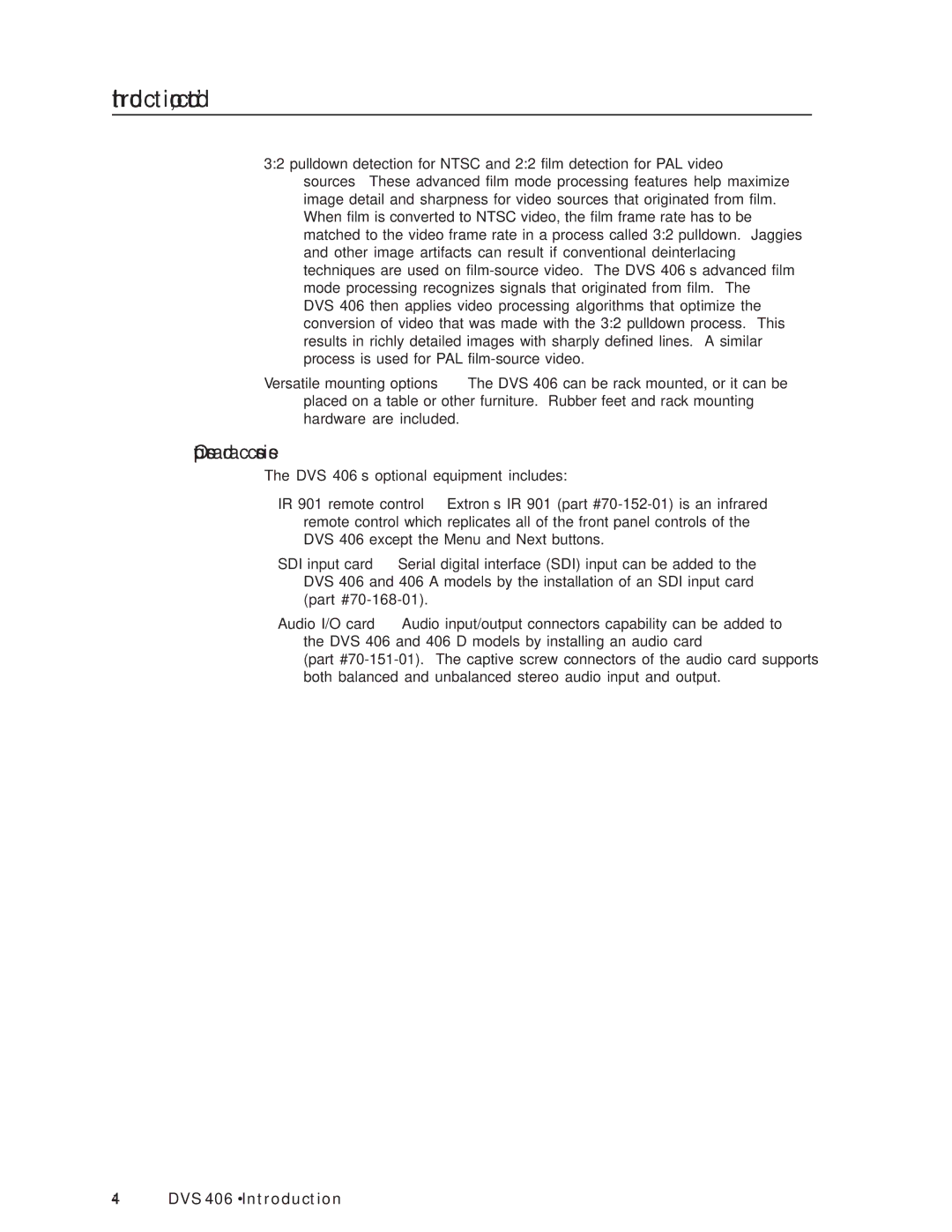Introduction, cont’d
3:2 pulldown detection for NTSC and 2:2 film detection for PAL video sources — These advanced film mode processing features help maximize image detail and sharpness for video sources that originated from film. When film is converted to NTSC video, the film frame rate has to be matched to the video frame rate in a process called 3:2 pulldown. Jaggies and other image artifacts can result if conventional deinterlacing techniques are used on
Versatile mounting options — The DVS 406 can be rack mounted, or it can be placed on a table or other furniture. Rubber feet and rack mounting hardware are included.
Options and accessories
The DVS 406’s optional equipment includes:
•IR 901 remote control — Extron’s IR 901 (part
•SDI input card — Serial digital interface (SDI) input can be added to the DVS 406 and 406 A models by the installation of an SDI input card (part
•Audio I/O card — Audio input/output connectors capability can be added to the DVS 406 and 406 D models by installing an audio card
(part
